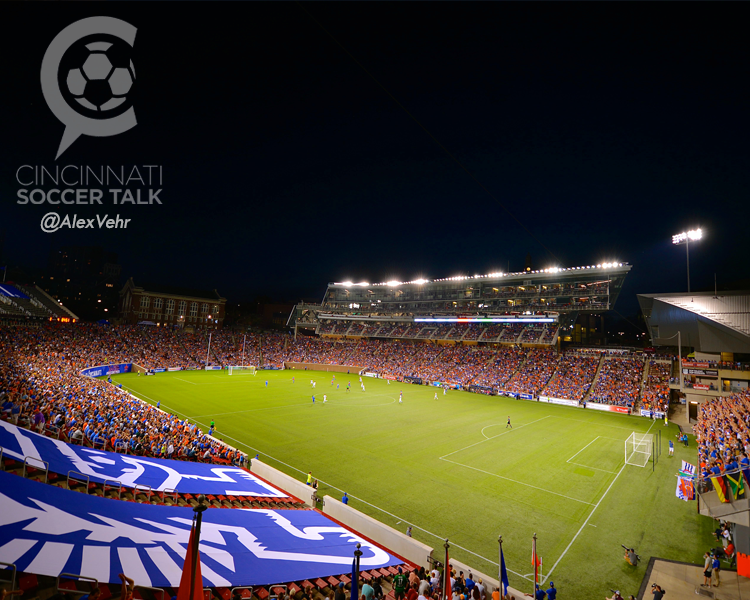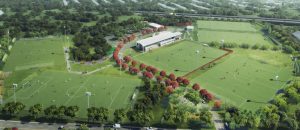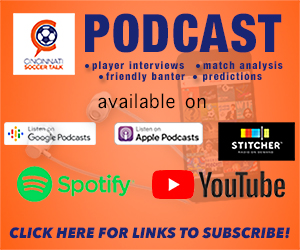Originally Posted 11/8/2017- The club has since added GK Coach Jack Stern and Asst Coach Austin Berry to the club. On 3/14/2018, FC Cincinnati announced the signing of a new Technical Director.
Two years in, FC Cincinnati General Manager Jeff Berding stated that he wanted to move the club into Chapter Two of its existence. No more would they look at themselves as a new kid on the block but rather as a club striving for long-term success and titles. Berding noted that the club erred in certain aspects off the field, including squad building and player identification. Changes were made to the staff to help correct some of these problems. The front office and supporters know there needs to be more done if we want to experience long-term success and jump to MLS if the opportunity presents itself. We are going to examine how clubs around the country have improved in these areas and what improvements we might expect to see during the next couple of years.
Development
When Coach Alan Koch was brought to FC Cincinnati in December 2016 as the Director of Scouting and Analytics, most saw it as a sign of progression at the young club. He was brought in to help develop young talent, head up the creation of a potential academy/ practice facility, and serve as an assistant coach. Unfortunately, since his move to Head Coach, this position as gone unfilled. Yes, there has a lot that has gone on with the club but this open vacancy almost seems like a lost year in some of the development aspects of the club.
If FC Cincinnati wants to succeed long term, they need a Development Academy. In my mind, this is priority No. 1. One area critical to an MLS franchise is the ability to develop Homegrown Players. This allows clubs to sign players in their system without having to go through the cumbersome MLS SuperDraft process. FCC needs to put in place staff who can set up a youth development infrastructure that the club can build on to consistently develop players into the first team in the next decade.
That infrastructure also includes the opening of the oft-mentioned practice facility. Opening up a practice facility will allow FCC more control over all aspects of development. It might not sound big, but having consistent practice times on a quality field surrounded by professional facilities will do wonder for players. The club is currently beholden to the University of Cincinnati and the demands of their athletic teams. While they have been very accommodating, FCC has to juggle around time and space and that puts a strain on the players and the coaching staff. The club would also do well to get the team off the turf and on to a grass field that will help reduce the wear and tear on the players during the season.
Looking at recent expansion clubs, they’ve all gotten the ball rolling quickly with an academy. Before Atlanta signed a player to an MLS contract or even signed a coach they created an academy and got started on a $60 million practice facility. Los Angeles FC, set to debut next year, fielded a U-12 team in 2016 and added several more teams in 2017 including a full-fledged girls academy. Orlando City got the jumpstart as a USL club when it purchased the Florida Soccer Alliance in 2012 and started their academy well before their move to MLS. You have already seen academy product Tommy Redding break through to the MLS squad while several others look promising for their USL squad. FC Cincinnati had the opportunity to get a head start on developing an academy and practice facility in the past year over their expansion rivals and didn’t take advantage. If FCC gets an MLS bid next month, I’d look for them to fast track the creation of their academy.
Another area that is crucial to development in today’s high-pressure environment of professional sports is to provide sports staff to accommodate the mental and physical health of our players. In Atlanta, investor-operator Arthur Blank has given his club tremendous resources in the player development as well as in other areas such as player support. Atlanta has a “Head of Sports Science” who works with the players in areas such as psychology. This position goes along with the two team physios and two athletic trainers to give the playing staff the proper healthcare they require at the pinnacle of soccer in the U.S.
Scouting/ Player Identification
After the end of season press conference, Koch was sent across North America, Europe, and Asia to meet with people who can help the club as well as identifying players. A question that arises is should he be the one in charge of this process and essentially carry the role of Head Coach & Technical Director? If we stay in the USL I think he could, but if we were to jump to MLS in 2019, would he have the ability to handle all of these responsibilities himself?
Atlanta also carries a “Head of Technical Recruitment and Analysis” to provide the technical staff with scouting video and analysis of potential targets to bring into the club. Lucy Rushton was brought in January of 2016, over a full season before Atlanta stepped on the field to help build the squad. With experience at the international level after spending time with Reading FC and Watford in England, FC Cincinnati would do well to target individuals with this pedigree if they hope to enter MLS. They need to get the processes in place to identify and attract high-quality players if they want to come into MLS and compete at the highest playing level.
Atlanta is fresh in most minds for success in their first season in building their club but it is not a given and you don’t have to look far for clubs that have struggled since joining the league. Minnesota United had a rough go early this year after they waited until after the 2016 NASL season to start building their squad. Atlanta started off with three Designated Players, while Minnesota started with none. Orlando City has been famous for their boisterous crowds, but on the pitch, success has eluded them so far, and you can contribute it to not putting the correct people in place from the start. Right now FCC relies on Koch’s network of agents and friends to bring in players but Jeff Berding and Carl Lindner would benefit greatly by sparing no expense in bringing in a top-notch scouting team to help Alan now, and especially when they get that MLS call.
Technical Staff
The area that we’ve seen the most turnover at FCC is in the technical staff. As it stands, FC Cincinnati employs two full-time coaching staff members in Koch and Assistant Coach Yoann Damet as well as a full-time athletic trainer. The club also maintains a part-time staff which includes a goalkeeping coach, strength coach, team manager and a videographer. I am sure there is additional support such as a team chiropractor and massage therapist that are not listed, but it looks like FC Cincinnati is not playing with the proverbial full deck of cards at the moment.
Let’s take a look at one of the most successful clubs in MLS, especially when it comes to talent development, FC Dallas. The Clark Hunt-led club employs a total of 13 people to their technical staff. Compared to FCC’s positions employed above, Dallas has a Technical Director, three full-time assistant coaches and a large support staff to help the squad.
Fellow MLS expansion candidate Sacramento Republic FC lists a head coach, three assistant coaches, a Director of Football, Head of Sports Science and 14 additional support staff members in their technical staff. They also employ a nine-member technical staff for their academy. These numbers make Louisville City FC’s performance even more impressive. The staff to the south is comprised of O’Connor, two assistants and a handful of medical and support staff.
If FC Cincinnati is really serious about winning championships I would encourage them to first make some of the positions like the Goalkeeper Coach fulltime and add another assistant. I’m not saying it’s mandatory but having more staff present and available only helps the squad. Coaches at this level need to be present with the players both on and off the field. If we want to get the most out of our players it makes sense to have their position coach at practice, in team meetings and scouting sessions. In addition to their time with players, the coach also has to prepare game film and study opponents to prep their team. I mentioned above that FCC has to work around several UC’s athletic team’s schedules for practice space, and that not only affects players but especially the part-time coaches. I think it’s fair that the coach shouldn’t have to juggle a second job while fulfilling the obligations of their coaching role. Having more full-time coaches could also help Koch and Damet with breaking up scouting responsibilities and allow them to be better organized to work with the team.
What was recommended above will for sure come at a heavy cost and one that the club may not be able to completely bear all at once. But looking at how most of the new clubs have come into the league as well as some of the top performers in MLS, these ideas are necessary if the club wants to compete immediately in MLS or over the long haul in USL by the way the league is developing. With the MLS decision in December, there must be a plan of action to fill these roles in time for the 2019 or 2020 MLS seasons. We hear the talk of “will we be ready to go by 2019” in regards to our stadium, but how about the club’s staff and infrastructure? Most typically look just at the immediate product on the field, but we need to really ask ourselves if we believe we are set up long-term to play with the big boys of Major League Soccer.
@bradleysweigel for @CincySoccerTalk
[getsocial app=”sharing_bar”]















